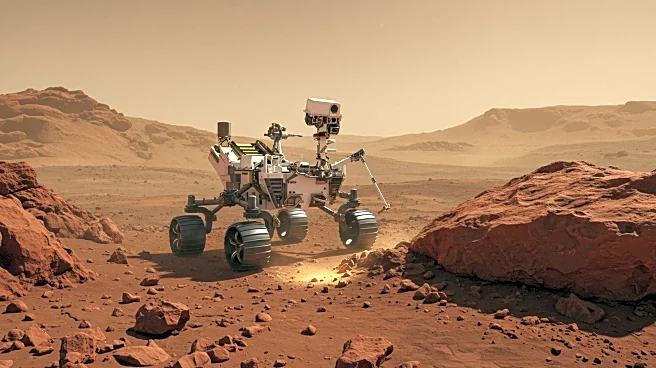What's Happening?
NASA's Curiosity rover is conducting a detailed investigation of the Martian surface, focusing on the texture and chemistry of bedrock within a topographic low area. The rover's team is using the Alpha Particle X-ray Spectrometer (APXS) to analyze a target named 'Asiruqucha,' a light-toned, nodular bedrock. This analysis aims to identify chemical trends between the hollows and ridges in the area. The rover is also capturing images with the Mars Hand Lens Imager (MAHLI) to provide context for the chemical data. Additionally, Curiosity is using its remote sensing instruments to document the region, including stereo Mastcam images of various features and high-resolution imaging with the ChemCam instrument.
Why It's Important?
The ongoing research by Curiosity is crucial for understanding the geological history and environmental conditions of Mars. By analyzing the chemical composition of Martian rocks, scientists can infer past water activity and potential habitability. This information is vital for future missions, including those aimed at finding signs of past life. The data collected by Curiosity also helps refine models of Mars' climate and geological processes, contributing to broader planetary science and exploration efforts.
What's Next?
Following the current observations, Curiosity will embark on a 30-meter drive to explore an interesting ridge feature. This movement is part of a planned sequence of investigations aimed at gathering more comprehensive data about the Martian surface. The rover will continue its atmospheric monitoring using various instruments, ensuring a continuous stream of data for analysis.

